Coagulant for wastewater treatment: how to choose + rules of use
There are many ways to treat wastewater. When arranging autonomous sewer networks, in addition to installing the usual filters that can filter out harmful substances and make the water cleaner, the precipitation method of cleaning - coagulation - is increasingly used.
We will tell you by what principle the coagulant works for water purification. In the proposed article, all varieties used in practice are described in detail. You will learn what to consider when choosing a tool and how to use it correctly.
The content of the article:
The principle of coagulants
Coagulation is a method of water purification by adhesion of polluting dispersed substances for subsequent removal by mechanical method, by filtration. The combination of pollutants occurs due to the introduction of coagulating reagents, creating the conditions for the simplest elimination of related pollutants from the treated water.
The term "coagulatio" in Latin means "thickening" or "coagulation." Coagulants themselves are substances capable of creating insoluble and sparingly soluble compounds through a chemical reaction, which are simpler and easier to remove from water than dispersed components.
The principle of operation of substances is based on the fact that their molecular form has a positive charge, while most contaminants have a negative charge. The presence of two negative charges in the structure of atoms of dirty particles does not allow them to join together. For this reason, dirty water always becomes turbid.
At the moment of introducing a small portion of the coagulant into the liquid, the substance begins to pull up the suspensions present in it. As a result: with an increase in the intensity of scattered light, the liquid becomes more cloudy for a short period of time. After all, one coagulant molecule can easily attract several dirt molecules to itself.

The attracted dirt molecules begin to react with the coagulant, as a result of which they combine into large complex chemical compounds. Poorly soluble highly porous substances gradually settle to the bottom in the form of a white precipitate.
The owner’s task is only to remove the sediment in time, using any of the types of filtration available to him.

The effectiveness of the drug can be judged by the formation at the bottom of the sediment in the form of white flocculent formations - flocs. Due to this, the term “flocculation” is often used as a synonym for the concept of “coagulation”.

In addition to wastewater treatment, coagulants are used in pool water treatment, in the water treatment of industrial and drinking water in regions with limited water resources. We recommend that you familiarize yourself with the possibilities of coagulating chemical compositions, the features of which are described on our website.
The use of reagents: pros and cons
The effectiveness of modern equipment to neutralize impurities in wastewater is not able to reach a maximum level without involving reagents.
Modern coagulants can significantly increase the intensity and quality of the wastewater treatment process. The high cost of reagents pays off for a number of advantages that they possess.
Among the indisputable advantages of using synthetic coagulants, it is worth highlighting:
- efficiency;
- affordable cost;
- high quality cleaning;
- universality of application.
Wastewater is a stable aggressive system. And coagulation helps to destroy it by forming large particles in order to subsequently remove them by filtration.
The use of reagents gives good results in the removal of suspended and colloidal particles from effluents.

But the precipitation method using reagents is not without drawbacks. These include:
- the need for strict adherence to dosage;
- the formation of a large volume of secondary waste that requires additional filtration;
- the complexity of establishing the process on their own.
On an industrial scale, coagulation processes are involved everywhere, they are put on stream. To establish a system at home, you will have to purchase special installations, the cost of which is quite high.
Most owners solve this problem by using individual coagulants of a household type, which are sold in small containers.

In some cases, coagulation can be carried out directly in mechanical filtration system. For this, the reagent is introduced into the pipeline section with the liquid to be treated before it is fed to the filter. And in this case, foreign particles already “transformed” into flakes enter the filtration system.
The main types of coagulants
There are many types of coagulants. We will not list their formulas in detail in the article. Consider only two main groups, which are divided into organic and inorganic depending on the feedstock.

Today, many domestic and foreign companies are engaged in the production of coagulants. The reagents of a new generation produced by them differ from the coagulants produced even under the Soviet Union in their improved technical characteristics.
Organic natural substances
They are specially created reagents that, by accelerating the sticking of aggressively unstable particles present in water, facilitate the processes associated with their separation and deposition. Organics help stimulate the incorporation of pollutants into dense suspensions and emulsions that facilitate their removal from water.

When interacting with pollution molecules, organic coagulants are significantly reduced in size. Upon completion of the reaction, they precipitate as a small amount of precipitate.
By minimizing the volume of sediment accumulated at the bottom of the tank, it is much easier and faster to filter. At the same time, a reduced amount of sludge in no way affects the quality of treatment.
Due to the limited raw material base, natural reagents are not widely used in wastewater treatment on an industrial scale.But for domestic purposes they are often used.
Synthetic Coagulating Compounds
These types of reagents are based on mineral and synthetic elements. Polymers contribute to the formation of a high cathode charge, thereby stimulating the rapid appearance of flakes. They perfectly interact with water, providing a complex effect on it: softening its structure, as well as eliminating coarse impurities and salts
The most widely used salts of polyvalent metals created on the basis of iron or aluminum. Iron is used for rough cleaning.

Among the iron compounds, the most popular are:
- ferric chloride - hygroscopic crystals with a dark metallic luster, perfectly eliminate large particles of contaminants and easily remove the smell of hydrogen sulfide;
- iron sulfate - a crystalline hygroscopic product that dissolves well in water and is effective in the treatment of sewage.
Due to the low level of viscosity at a low molecular weight, such reagents are highly soluble in any type of processed fluid.
Of the coagulants created on the basis of aluminum, the most common are:
- aluminum oxochloride (OXA) - used to treat water with a high content of organic natural substances;
- aluminum hydroxychlorosulfate (GHSA) - perfectly copes with natural wastewater deposits;
- aluminum sulfate - a crude technical product in the form of pieces of gray-green color is used to purify drinking water.
In previous years, polymers were used only as an additive to inorganic coagulants, using them as stimulants to accelerate the formation of flakes. Today, these reagents are increasingly used as the main ones, replacing them with inorganic ones.
If we compare organic and synthetic substances, the former win in the fact that they act much faster. In addition, they are able to function in almost any alkaline environment and do not interact with chlorine.

Organic active compounds also benefit in that they do not change the pH in water. This allows them to be used for water purification, where plankton colonies are present, algae and large microorganisms grow.
Selection Guidelines
The choice of coagulant for wastewater treatment must be approached very carefully. Indeed, although the substance does not pose a danger to human health, it has a rather narrow specialization in its action.
When choosing a coagulant for wastewater treatment, you can also use reference manuals, but before purchasing a consumable, you should still consult with professionals specializing in water treatment.
To protect yourself from disappointment in case of low efficiency of the use of the coagulant, we recommend that you first pass the water for analysis. Laboratory studies will give an idea of the composition and help determine the most appropriate type of treatment.

Coagulants are quite specific substances. In some cases, they are able to tear off elements of water, in others, on the contrary, enhance their action. For example, the use of an active substance created on the basis of aluminum and iron sulfate is capable of showing a threefold effect: to clear the contents, as well as to defer it and significantly soften it.
When using any type of coagulant, the main thing is to adhere to the dosage recommended by the manufacturer. Too small a portion of the active substance will provoke a reaction, but it will not proceed as intensely as necessary for proper cleaning. The sediment will precipitate slowly, and the liquid will not be cleaned of harmful impurities.
In addition, if the dosage is disturbed, the flakes begin to precipitate unevenly. In this regard, many microflakes are formed in water, which due to their small size are not captured by filters.

To simplify the task of calculating the required amount of active substance, manufacturers produce coagulants in packages equipped with dispensers, not forgetting to attach detailed instructions for use to them.
Process conditions
The maximum efficiency of wastewater treatment is achieved through an integrated approach to solving the problem. Therefore, when equipping autonomous treatment facilities, coagulation is used in combination with mechanical and biological treatment.
To do this, erect structures consisting of vertical sumps separated by partitions. Due to this, the effluents undergo multi-stage treatment. First they settle, then they are purified by processing by bacteria, and then they enter the chamber where they enter the coagulation process and are filtered at the final stage.

The installation of specialized equipment, the calculation of the approximate dose of consumables and the initial control at all stages of the wastewater treatment process should be entrusted to professionals.
The coagulation scheme includes three main stages:
- The introduction of a coagulant into a contaminated liquid.
- Creating conditions for maximum interaction of the active reagent with impurities.
- Settling followed by filtering of settled particles.
A necessary condition for the occurrence of coagulation is the equality of particles with an opposite charge. Therefore, in order to achieve the desired result, having received the greatest reduction in effluent turbidity, it is important to observe the concentration of the reagent used.
When using coagulants for wastewater treatment, it should be borne in mind that these substances work only at positive temperature.

Therefore, it is so important to ensure the stability of heating of the treated water.
To accelerate the coagulation process, substances capable of forming colloidal dispersion systems - flocculants can be added to the composition of water. For this purpose, the most commonly used: starch, polyacrylamide, activated silicate. They will be adsorbed on the coagulant flakes, turning them into stronger and larger aggregates.
The flocculant is introduced into the zone of the contact medium after 1-3 minutes from the moment the coagulant is introduced. By this time, the formation of micro flakes and the subsequent sorption of precipitating substances are completed.
The amount of sludge deposited in the contact tanks depends on the type of reagent used and the degree of pre-treatment of the effluents to be treated.
On average, after mechanical cleaning, the amount of sediment per one person per day is about 0.08 liters, after passing biofilters - 0.05 liters, and after processing in aeration tank - 0.03 liters. It only needs to be removed on time as the tank is full.
Conclusions and useful video on the topic
The principle of action of the coagulant:
Video presentation of household coagulating products:
Using the coagulation technique, you will get a great opportunity to achieve high results with small investments. Properly approaching the choice of reagent and creating the necessary conditions for its operation, it will not be difficult to purify waste water immediately from a variety of impurities and contaminants.
Have questions in the process of getting acquainted with the information we provided? Do you know the subtleties of using coagulants in practice? Please share your knowledge and impressions, as well as ask questions in the box below.

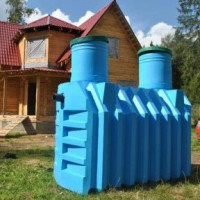 Which septic tank to choose: rating of the best sewage treatment plants
Which septic tank to choose: rating of the best sewage treatment plants  How to choose a septic tank for giving: an overview and tips for choosing the best option
How to choose a septic tank for giving: an overview and tips for choosing the best option 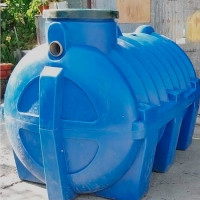 Overview of the septic tank “Sunrise”: characteristics, model range, installation rules
Overview of the septic tank “Sunrise”: characteristics, model range, installation rules 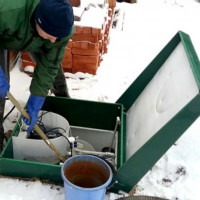 Rules for servicing a septic tank in winter: cleaning and maintenance
Rules for servicing a septic tank in winter: cleaning and maintenance 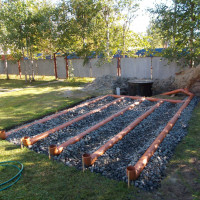 How to arrange a filtering field for a septic tank: typical schemes + design rules
How to arrange a filtering field for a septic tank: typical schemes + design rules 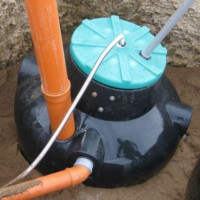 Septic “Fast”: a review of the lineup, reviews, installation and operation rules
Septic “Fast”: a review of the lineup, reviews, installation and operation rules  How much does it cost to connect gas to a private house: the price of organizing gas supply
How much does it cost to connect gas to a private house: the price of organizing gas supply  The best washing machines with dryer: model rating and customer tips
The best washing machines with dryer: model rating and customer tips  What is the color temperature of light and the nuances of choosing the temperature of the lamps to suit your needs
What is the color temperature of light and the nuances of choosing the temperature of the lamps to suit your needs  Replacement of a geyser in an apartment: replacement paperwork + basic norms and requirements
Replacement of a geyser in an apartment: replacement paperwork + basic norms and requirements
This is a time-consuming process and if you disrupt the dosage, you may not get the expected result. And much more depends on the choice of coagulant. Before starting the cleaning, I handed over the water for analysis to the laboratory, in which they told me which coagulant to use. Modern reagents even have dispensers, so you just need to carefully read the instructions and you won’t be mistaken. I’ll say the trouble is worth it. We dispose of the wastewater left in the septic tank simply into the gutter; it is very transparent and odorless.
I’m not sure that the coagulant for wastewater treatment can be correctly selected independently. We gave the sample to the laboratory, there we were selected according to the characteristics of the drain needed. We are glad. We watched the water after cleaning - a little unclear, but without smell and impurities. We buy a special coagulant in a container with a dispenser, it is very simple to use and the dosage chosen is correct.
Is Aqua Aurat useful?
Yes, Aqua Aurat is very good. It works at low water temperature, high coagulation stability. It removes odor and color well. But it is important to carefully follow the instructions regarding dosing, etc.
It is better to use the Bopak coagulant, as it is made on the basis of harmless components, in particular aluminum polyoxychloride!
The coagulant is really a great solution. The best of all that we visited was Hydraizer; there, even I didn’t have to take a sample to the laboratory. They arrived, made an analysis and picked everything up.